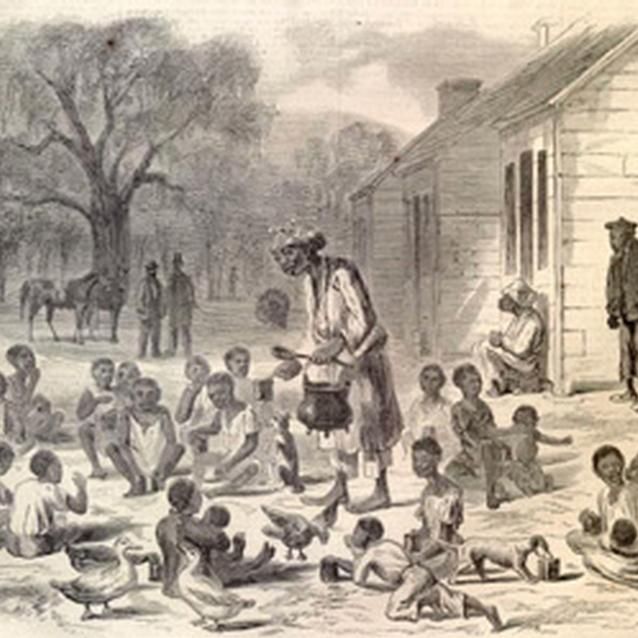Not all African Americans were enslaved, but children slave and free faced daunting challenges during this time. Free children struggled with their place in a white dominated society, carefully holding on to their fragile status. Slave children, under their parents and masters, lived in fear of punishment and isolation. Though circumstances widely varied, they often worked in fields with adults, tended animals, cleaned and served in their owners' houses, and took care of younger children while their parents were working.
The Reality

Library of Congress
Since slave children were not fully functional workers, they were given smaller rations than adults. While masters had a vested interest in the survival of children as future workers and assets, there was always a constant struggle between delayed reward and daily costs. The combination of meager diet and insufficient clothes in the best of times meant that slave children were particularly vulnerable when the Civil War brought shortages across the South.
Despite their marriages not being legally recognized, African Americans worked very hard under slavery to keep familial ties intact. These close ties can be seen by the sheer volume African Americans who returned to their families during the war. Between 1820 and 1860 approximately 30% of all slave children born in the upper South were taken from their families and sold to the Deep South to work in the harsher climate on plantations. After years of forced migration many of these African Americans took the opportunity provided by the upheaval of war to escape their masters and travel long distances to be reconnected with their families. By 1864 approximately 400,000 slaves within the South had fled their masters.
In addition to those returning home, many African American children found themselves living in Contraband Camps during the war, as their families fled to Union lines for refuge. Setting up these camps for slaves fleeing bondage was an unofficial practice of the Union army in the South until the Confiscation Acts of 1862 officially freed all slaves who came in contact with Union lines. Within these camps, approximately half of all fleeing slaves present were children. With limited resources in some camps, already exhausted and malnourished children often died. In better camps the children found more opportunities. Because of the large presence of children in some camps, an emphasis was placed on education. The American Missionary Association and other similar organizations sent educators to the camps to set up both Sabbath schools and primary schools.
In camps with poor conditions and no schools, African American children often worked to gain status, get better rations, or earn wages. Already familiar with tasks such as digging ditches, cooking, and washing, these young Contrabands served in menial jobs until the Emancipation Proclamation allowed them to serve in uniform. Those old enough became drummer boys, buglers, teamsters, and even soldiers. Though still not treated as equals, they faced fear and hardships, hoping for a better future.
Part of a series of articles titled No Time for Games.
Previous: Caught In The Middle
Next: An Uncertain Future
Last updated: August 11, 2017
